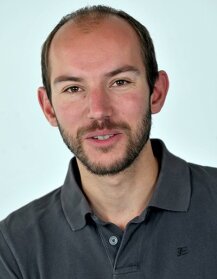
Space-time dynamics is the science of light with the highest number of degrees of freedom possible. In many senses it is at the extreme of science dealing with ultrashort laser pulses that are orders of magnitude brighter than the sunlight, million times shorter than the fastest electronic circuitry, and of astonishingly complex internal structure. Any kind of matter that interacts with such pulses exhibits totally new behavior under such extraordinary conditions, leading to many new effects to be discovered and completely new areas of science and technology to be developed. Among such ground breaking results are the generation of frequency combs, which surpass atomic clocks in terms of accuracy by many orders of magnitude, the generation of attosecond pulses, which - for the first time - allow researchers to directly image the dynamics of chemical reactions, the invention of the supercontinuum light source, with profound impact on spectroscopic investigations in biology, chemistry, physics, and material science, and the possibility of stress-free, non-thermal micro-processing of any material, just to name a few. However, the arguably most important challenge is the development of ultrafast, energy-efficient photonic circuitry. This is envisaged to replace key components of communication electronics found in internet routing centers, which are consuming much of the electricity of developed countries and need more every day to keep up with the internet's rapid growth. Space-time dynamics of nonlinear systems is, however, not only an important field of modern photonics and a key technology towards an energetically sustainable future but also serves as a fertile playground and testbed environment for all kinds of nonlinear sciences, spawning results in such diverse and crucial research areas as solid state physics, the physics of biomolecules, the dynamics of ocean waves, or pedestrian and automotive traffic patterns.
Our group is mainly focused on space-time nonlinear dynamics in micro- and nanostructured materials. Spatiotemporal effects require the control, understanding, and manipulation of light on length scales of nanometers and femtoseconds simultaneously. This challenge is tackled with a set of sophisticated experimental tools and highly parallel numerical methods, which allow us to control and analyze light under these conditions. This flexibility enables us to explore and exploit a plethora of effects which are spawned by the degrees of freedom inherent only in spatiotemporal nonlinear physics.
Together with various collaborators we study the dynamics of nonlinear, non-spreading wavepackets in discrete systems of various dimensionalities and the physics of wave-propagation in self-induced plasmas. Among other landmark achievements we have been the first group to experimentally observe and characterize the elusive 3D Light Bullet, the ultimate solitary wave. Furthermore we have a strong research program on nonlinear pulse propagation in periodically poled lithium niobate waveguide arrays. Here our interest ranges from fundamental aspects of discrete soliton dynamics to advanced all-optical switching and routing schemes.

